Agriculture
Agriculture, food supply and the rural population were problems for the Soviet Union, even though they perpetually evolved across its seven-decade existence. Comprising 80 percent of the Russian Empire's population in 1917, peasants had for decades been subjects of debate about their perceived backwardness and lagging productivity. Young and ambitious ones coveted the holdings of aristocratic landowners---the former serf-holders---or sought other opportunities in imperial borderlands. Simmering instability boiled over during rural insurrections in 1905 and in 1917. After 1905, the Tsar's government enacted reforms backing affluent peasants, seeking to build a bulwark against disorder. [Text continues at bottom of page]

As social order collapsed in 1917 after the February Revolution, peasants expropriated aristocrats' estates. They deserted the army in waves, returning home to claim their share of the land and bringing with them radical egalitarianism and Bolshevism. The poorest peasants received some land from the estates, while those with more resources---including families favored by the post-1905 reforms---suffered from crop requisitioning. Everyone endured the privation, hunger, and chaos of the Russian Civil War.
Introduced by Vladimir Lenin in late 1921, the New Economic Policy, or NEP, offered peasants a reprieve from requisitioning. Having paid taxes in kind, they could now consume or sell the rest of their crop as they saw fit. Harvests quickly returned to prewar levels. As peasants prospered, some expanded their land holdings and hired labor. To communists already hostile to the peasantry, this seemed like rural capitalism returning through the side door. When the NEP spiraled into crisis in 1928, the Bolsheviks' mistrust combined with the precedent of violent expropriations during the civil war, culminated in an assault on the peasantry. Falling grain prices diverged from the rising cost of cloth, metal goods, kerosene, and other industrial goods. Peasants responded by refusing to market surplus food. Soviet leader Josef Stalin viewed this as sabotage by hostile, affluent peasants, whom he denounced as kulaks, a Russian word denoting a grasping fist. He consequently sanctioned renewed requisitioning, followed by forced collectivization in 1929. Collectivization amounted to a civil war pitting leaders in Moscow, local officials, party militants, and pro-communist factions within village communities against the larger body of peasants. These campaigns brought the harvest under state control, allowing it to---barely---feed the cities and export grain to finance industrialization. Bureaucrats dictated minute details of production to the collective farms, but primarily concerned themselves with extracting more of the crop, which the state needed to feed the expanding urban population. The collective farms subsequently weighed down the Soviet Union's economic performance. News reports and propaganda campaigns bombarded the urban public with images of well-fed peasants working on well-heeled, mechanized farms. In reality, productivity and production plummeted because peasants dragged their feet and slaughtered livestock rather than turning them over to the collective farms. Aggressive food requisitioning caused famine that in 1932 and 1933 claimed as many as 8 million victims as it swept Ukraine, parts of Southern Russia, and Kazakhstan.
The rest of the 1930s passed in relative stability, but output lagged behind the level of 1928, or even that of 1913. World War II rained down further blows. Combat raged over the country's most productive agricultural lands, causing destruction that was compounded by German atrocities. Tens of thousands of villages and collective farms were destroyed. Many of the 8 million Soviet military casualties were peasant conscripts, while a significant proportion of the 20 million dead were civilians in villages. Furthermore, military service and male dominance in industrial labor provided men greater opportunities for a postwar way out of the collective farms. Consequently, women comprised a majority in rural areas long after the war. There everyone labored essentially without pay in return for a small personal garden for growing food for subsistence or small-scale trade.
Stalin's successors initiated reforms by cutting agricultural taxes, raising procurement prices, and curbing the harsh punishments for peasants who failed to work on collective farms. Under Premier Nikita Khrushchev, the government invested in machines, chemicals and other technologies, while Khrushchev's successors continued to invest in technological advances, but also in subsidized production and consumption. Subsidies grew year after year, augmented from the early 1970s by food imports. Artificially low prices further increased demand resulting in persistent scarcity in stores. These problems reached a climax when Mikhail Gorbachev attempted to loosen regulations on the agricultural sector by creating space for cooperative and private initiatives. These reforms, like his perestroika program in industry, caused rising prices that contributed to the ruin of his credibility in the eyes of Soviet citizens.
Suggested Reading and Resources
R. W. Davies and Stephen Wheatcroft, The Years of Hunger: Soviet Agriculture, 1931--1933(Palgrave Macmillan, 2003).
Carol Leonard, Agrarian Reform in Russia: The Road from Serfdom (Cambridge University Press, 2010).
Alec Nove, An Economic History of the USSR, 1917--1991, 3rd ed. (New York: Penguin, 1993).
Seventeen Moments in Soviet History, "Countryside," http://soviethistory.msu.edu/theme/countryside/.
Lynne Viola, V. P. Danilov, N. A. Ivnitskii, and Denis Kozlov, The War against the Peasantry, 1927--1930: The Tragedy of the Soviet Countryside (Yale University Press, 2005).
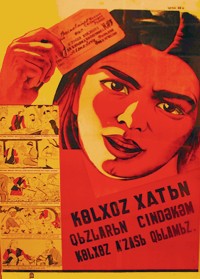
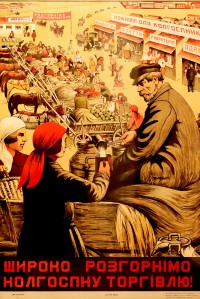
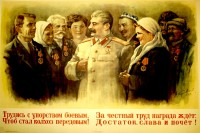
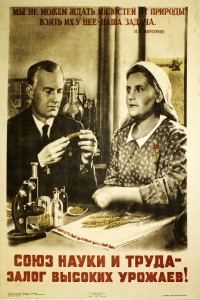
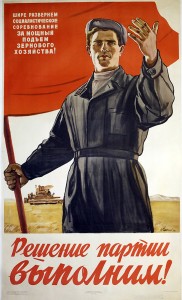
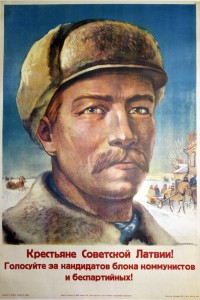
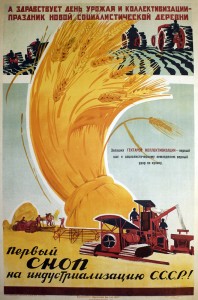
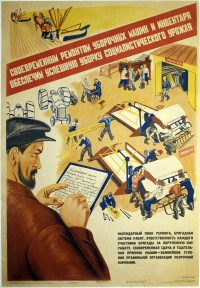
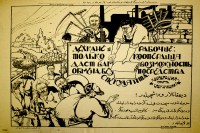
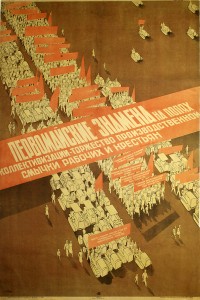
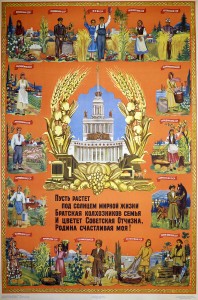
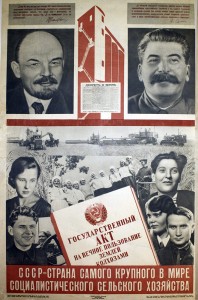
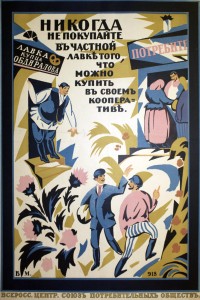
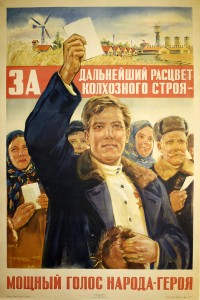
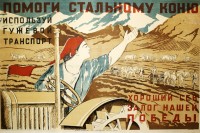
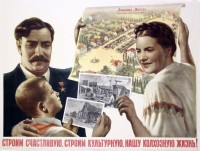
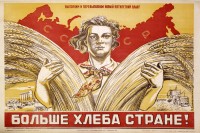
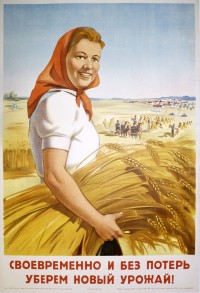
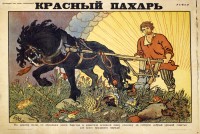
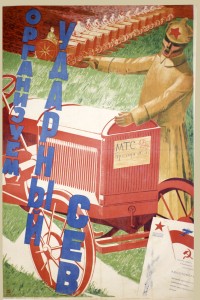
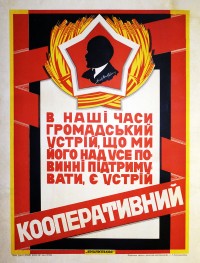
![PP 405: The Strength Of Cooperation
1. We have discussed together how to live in a better way.
We decided in our meeting to begin mercantile cooperation.
2. There is no resentment in mercantile cooperation.
[Partial translation]](https://www.posterplakat.com/thumbs/the-collection/posters/pp-405/pp405-200x262.jpg)
![PP 407: M.S.P.O. [Moscow Union of Consumer Societies]. Away with credit! Selling for credit is evil! It’s necessary to fight against it! [Partial translation]](https://www.posterplakat.com/thumbs/the-collection/posters/pp-407/pp407-200x275.jpg)
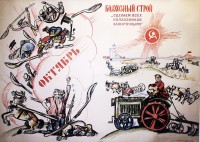
![PP 423: Move forward with collectivization of the countryside, with the liquidation of the kulaks! As a class!
[Bottom text] He is a tractor driver of a military school and he is not lacking as a surveyor:
The young Red Army Man sweeps away boundaries and fences!
[Partial translation]](https://www.posterplakat.com/thumbs/the-collection/posters/pp-423/pp423-200x280.jpg)
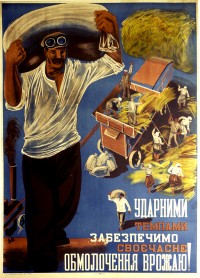
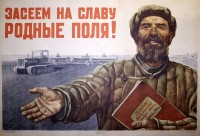
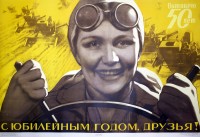
![PP 562: A deserter never arrives alone: He hauls the Old Regime with him everywhere he goes.
Struggle against desertion as [you would] against the bitterest enemy.](https://www.posterplakat.com/thumbs/the-collection/posters/pp-562/pp562-200x284.jpg)
![PP 584: A Giant of Agricultural Machinery Manufacturing.
During the ongoing collectivization old-fashioned agricultural tools will pass into history, yielding their place to improved machines and tools. [Partial translation]](https://www.posterplakat.com/thumbs/the-collection/posters/pp-584/pp584-200x147.jpg)
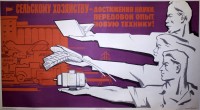
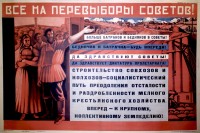

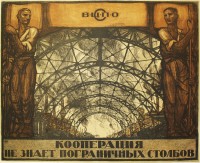
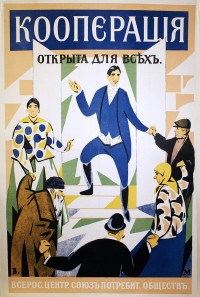
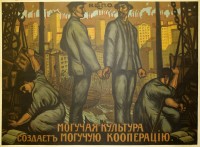
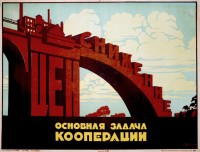
![PP 647: Remember Kolkhoznik!
[Pending translation (Без Перевода)]](https://www.posterplakat.com/thumbs/the-collection/posters/pp-647/pp647-200x271.jpg)
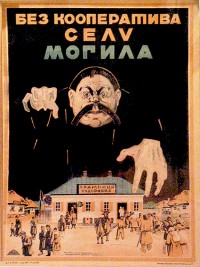
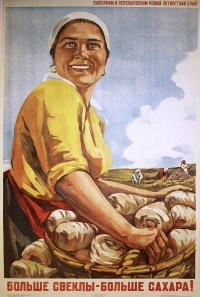
![PP 678: A quality and timely harvest-- a blow against the class enemy.
The fight against lost harvest should be established as the main point in harvesting. [Partial translation]](https://www.posterplakat.com/thumbs/the-collection/posters/pp-678/pp-678-catalog-image-redo-200x141.jpg)
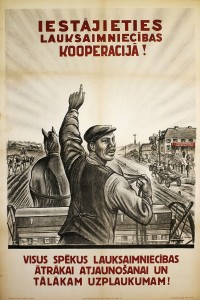
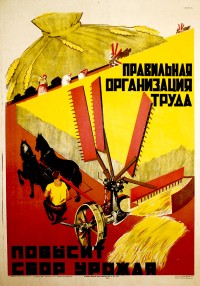
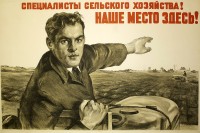
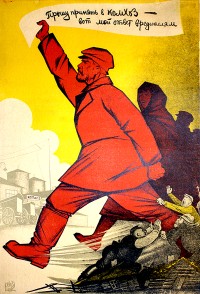
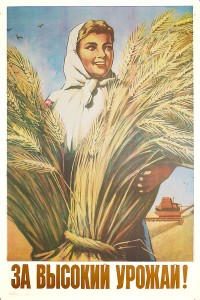
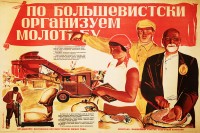
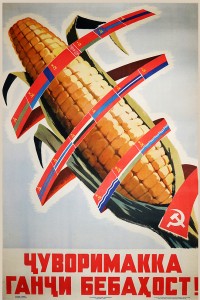
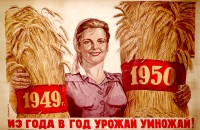
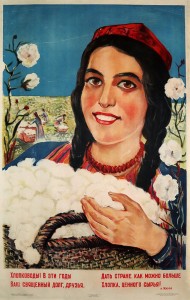
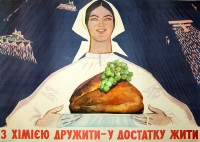
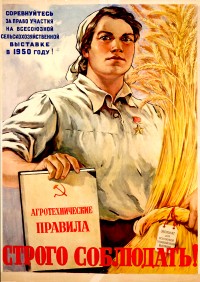
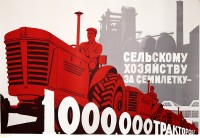
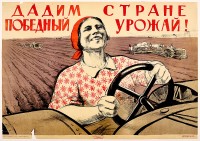
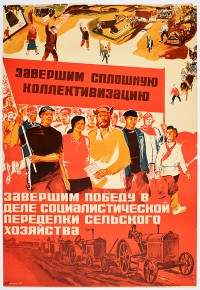
![PP 1102: [Pending translation (Без Перевода)]](https://www.posterplakat.com/thumbs/the-collection/posters/pp-1102/pp1102-200x300.jpg)
![PP 1129: The growth of agriculture in the USSR over ten years
[Partial translation]](https://www.posterplakat.com/thumbs/the-collection/posters/pp-1129/pp-1129-catalog-image-200x155.jpg)
![PP 1150: The machine speeds and eases work.
Appeal Peasants!
Organize into Machine Cooperatives.
Machines are accessible to all, only they must be acquired not individually, but in a group.
[Partial translation]](https://www.posterplakat.com/thumbs/the-collection/posters/pp-1150/pp1150-200x293.jpg)
![PP 1167: The artel leads to good - [go] not a step without the artel!
[Partial translation]](https://www.posterplakat.com/thumbs/the-collection/posters/pp-1167/pp-1167-catalog-image-200x149.jpg)
![PP 1205: Bread is our strength [it is a] Grave for interventionists.
Collect the harvest.](https://www.posterplakat.com/thumbs/the-collection/posters/pp-1205/pp-1205-catalog-image-200x138.jpg)